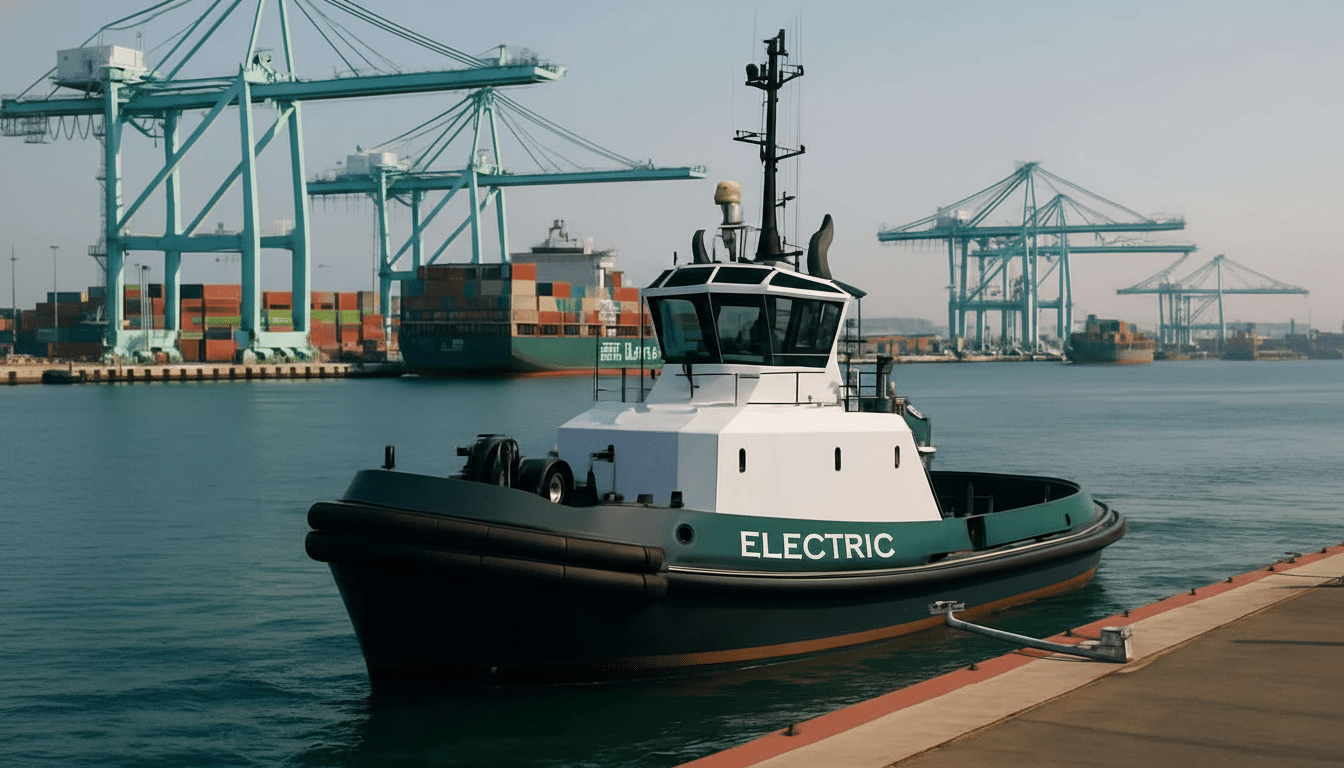Arc, the Los Angeles marine electrification company that’s designing and building the world’s first all-electric commercial ship, known as a Zero Emissions Electric Propulsion “ZEEP” tugboat, for the Ports of Los Angeles, the nation’s largest port, has struck a deal to build another handful of those ZEEPs. It is a breakout moment that elevates Arc beyond flash leisure craft and into the gritty, high-impact world of ship-assist workboats at one of the world’s most active port complexes.
The tugs will be constructed under a partnership with Seattle’s Snow & Company and will serve on ship-assist duty at the Port of Los Angeles and its vicinity.

For Arc, whose co-founders are former aerospace engineers, the deal is a validation of a supposition that electrification can offer cleaner air, quieter operations, and lower-lifecycle costs in one of maritime’s most demanding duty cycles.
A $160 million vote of confidence
The expansion of Curtin Maritime’s fleet reflects increasing demand for low-emission harbor craft as regulators, communities and customers push ports to clean up pollution. The purchase price comes to about $20 million a tug, putting Arc’s boats in between modern, high-spec ship-assist tugs while promising a fuel and maintenance cost advantage relative to traditional all-diesel designs.
The order can significantly alter local emissions because ship-assist fleets are tiny compared with truck or ocean-going ship populations, Arc says. Fewer boats means each additional clean tug can make a difference, particularly when you consider how hard these boats operate maneuvering container ships and tankers into and out of ports in near communities.
Inside the hybrid-electric design
The new tugs have been designed for electric-first propulsion. That means two electric motors together generate more than 4,000 horsepower, pulling from an onboard battery system of around 6 megawatt-hours — one of the largest packs to appear in a harbor craft. For longer missions, or when shore charging is not practical, we have a small diesel generator as a range extender to charge the batteries, so it’s still a mainly zero-emissions operation at point of use for everyday tasks.”
It’s a configuration that suits the nature of ship-assist work: short transits, intermittent bursts of high bollard pull and predictable duty cycles. Batteries can accept and dispatch peak power in zero time and without the clatter, cutting fuel burn and noise, and minimizing wear on cogs and wheels. Arc anticipates reduced time off the road thanks to their straightforward electric drivetrains, and the removal of large, fussy engine systems.
Packaging also improves. And by shrinking or even doing away with exhaust stacks and massive main engines, designers can take back space for crew quarters and improve sightlines from the wheelhouse — important when working mere inches from, say, a 1,200-foot container vessel. Better visibility and reduced noise are not merely comfort features; they are safety benefits.
Why ports are demanding cleaner tugboats
Harbor craft are a major source of nitrogen oxides and diesel particulates close to terminals, according to emissions inventories provided by the Port of Los Angeles and regional air quality agencies. Cutting those pollutants is also central to local clean air plans, while tackling them is integral to global decarbonization goals from the International Maritime Organization, which is pushing the industry toward deep emissions cuts over coming decades.

Ship-assist electrification already is demonstrating feasibility[CW1]. Damen 100% electric tug “Sparky” in Auckland delivered equal bollard pull to diesel with much lower operational costs and significantly reduced emissions. Examples of the model scaling across diverse port profiles include Crowley’s eWolf program in San Diego, and HaiSea Marine’s battery-electric tugs operating in British Columbia’s LNG corridor. Arc’s hybrid system provides some operational flexibility as charging infrastructure continues to develop.
Policy tailwinds are strengthening. California’s Commercial Harbor Craft Rule is driving demand for cleaner technologies and federal programs overseen by the Environmental Protection Agency and the Maritime Administration are allocating money for zero-emission equipment and charging. Carriers that act soon can cash in incentives and future-proof their fleets.
Economic, infrastructure and road ahead developments
It’s all in the TCO (total cost of ownership).
Electric propulsion translates to lower fuel consumption, and that means lower routine maintenance; no oil changes, fewer moving pieces, and less idling are the breaking example. Electric motors with peak torque available on demand will allow operators to maximise use of energy when pushing and pulling. Over several years of service, these savings can make up for a higher initial cost, especially with the assistance of grants or tax incentives.
Charging remains the gating item. It is widespread for cargo ships to plug into shore power, but it is still spotty for tugs to have high-rate charging options. Arc’s hybrid design offers a middle ground: run electric-first when chargers are around, rely on the onboard generator when jobs push you out of the battery’s range, and convert to electric full-time as ports adapt to more electric vessels.
Safety and certification are table stakes in commercial maritime. ‘Marine batteries Cellkraft large-hormat marine batteries have fire detection, isolation and a fire ventilation system and incoorporate classification like ABS and DNV. See Also: Can House Lawmakers Avoid a Sins of Commission With the FFG(X) Arc’s high-voltage system experience — and Snow & Company’s commercial shipyard expertise — will be closely watched as they move through design review, construction and sea trials.
For Arc, the Curtin Maritime order represents more than revenue; it’s a sign that electrification is beginning to shift from pilot projects to fleet commitments in harbor craft. If performance and reliability live up to the promise, these eight tugs could serve as a template for a wider transition to cleaner, quieter ship-assist jobs at ports all over the continent.

